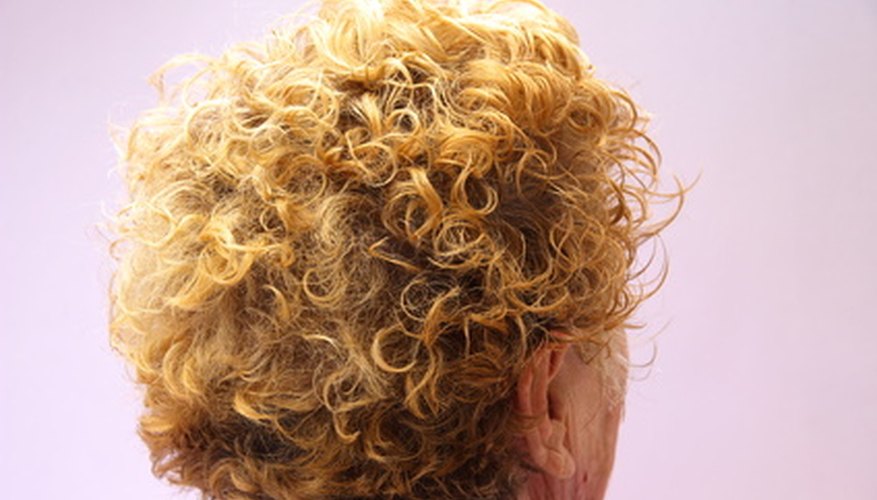No one is ever fully satisfied with their hair.
People with curly hair wish it were straight, while those with straight hair want curls. Giving people what they want is a multimillion dollar business. While it is easy to temporarily curl or straighten hair, permanently changing hair is a more difficult process.
History
In the late 1800s, Marcel Grateau created the first type of curling iron for hair. But, like curling irons of today, the curls were temporary. Around the turn of the twentieth century, Karl Nessler improved on the idea of a curling iron by adding an alkali chemical that made the curls permanent. His machine was huge and expensive, keeping the price of haircare too high for the average woman.
- In the late 1800s, Marcel Grateau created the first type of curling iron for hair.
- Around the turn of the twentieth century, Karl Nessler improved on the idea of a curling iron by adding an alkali chemical that made the curls permanent.
In 1928, after looking at an electric pot roast cooker, Marjorie Stewart Joyner created a machine that combined electric rods and a bonnet hair dryer. Her resulting machine not only made permanent waves more accessible, it also made Ms. Joyner the first African-American woman to hold a patent.
Modern Permanents
In 1941, the "cold wave" was developed. This process utilised ammonium thioglycolate, an acid, instead of the alkaline solution used with the thermal method. This method allows for the straightening as well as curling of hair.
Parts of the Hair Shaft
There are three major parts of the hair--the cuticle, the cortex and the medulla. The cuticle is found on the outside of the hair shaft. The cuticle contains the pigment, or colour, and protects the more fragile inner structures. The cortex is the middle layer of the hair shaft. This layer contains a series of peptide bonds. These bonds determine the shape of the hair shaft. The medulla is the innermost layer of the hair and is only found in larger hair shafts.
- There are three major parts of the hair--the cuticle, the cortex and the medulla.
- The cuticle is found on the outside of the hair shaft.
The Chemical Process of Curling Hair
Chemically, the process of perming hair is very simple. The hair is first wet, encouraging the cuticle to rise and opening up access to the cortex. The wet hair is then set on rollers to put the hair into the desired shape. A waving solution is then applied, usually some form of ammonium thioglycolate. This solution soaks into the cortex, breaking the existing peptide bonds. When the broken bonds have settled into a new configuration, a neutraliser or oxidation creme is applied. This stops the action of the acid and sets the broken bonds into their new patterns.
- Chemically, the process of perming hair is very simple.
- When the broken bonds have settled into a new configuration, a neutraliser or oxidation creme is applied.
The Chemical Process of Straightening Hair
The process for straightening hair is similar to curling but with a slight difference. Coarse, curly hair usually has a stronger cuticle that will not open with water. The first step of straightening is to coat the curly hair with an ammonium thioglycolate creme. This opens the cuticle and starts to break the peptide bonds immediately. Without neutralising, the creme is rinsed out. The hair is then rolled on large rollers and a waving solution is applied.
When the hair has reached a larger, s-shaped curl, the hair is coated with a neutraliser. The peptide bonds have now been rearranged into a new pattern that gives the hair a straighter look. Additional straightening can be achieved with drying and brushing after the neutraliser has been rinsed out.
- The process for straightening hair is similar to curling but with a slight difference.
- When the hair has reached a larger, s-shaped curl, the hair is coated with a neutraliser.
Warnings
Because the cuticle is disturbed by both the curling and straightening process, hair is far more fragile after chemical treatment.
It should not be washed or overly styled while the new peptide bonds are still easily broken. This could result in loss of the new style or hair breakage.
